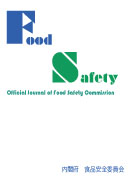This is a summary report of FSCJ (Food Safety Commission of Japan) workshop entitled “Future Challenges and Opportunities in Developing Methodologies for Improved Human Risk Assessments, which held in November 2018. Scientific advancements have facilitated the development of new methods for chemical risk assessments with the expansion of toxicological databases. They are promising tools to overcome challenges, such as situations of data insufficiency, estimation of internal exposure and prediction of hazard, and enable us to improve our human health risk assessment in food safety. In this review, current understandings on developments in chemical risk assessments, especially focusing on Threshold of Toxicological Concern (TTC) approach, non-testing and in-silico approaches (e.g. read-across), and physiologically based pharmacokinetics (PBPK) modeling are discussed as possible promising tools. It also discusses future challenges and opportunities regarding social environment buildings in which all stakeholders including scientific experts, risk managers and consumers are able to accept these new risk assessment technologies. International collaboration would increase and enhance the efficiency in forming innovative ideas and in translating them into regulatory practices. It would strengthen technical capacity of experts who contribute to regulatory decisions and also promote acceptance of new methodologies among stakeholders. Cross-sectional collaboration such as making good use of human data of pharmaceutical drugs will facilitate a development of fresh tools for food safety domains. Once a new methodology is recognized in risk assessment agencies as implementable, it needs to be acknowledged and accepted by wider range of different stakeholders. Such stakeholders include scientific experts who conduct risk assessment for the risk assessment agencies, food industries and consumers. Transparency in the risk assessment work performed by regulatory agencies should strengthen their credibility and promote the acceptance of risk assessment including the new methodologies used in it. At the same time, efforts should be continued by regulatory agencies to further communicate with consumers about the concept of risk-based assessment as well as the concept of uncertainty.
View full abstract
